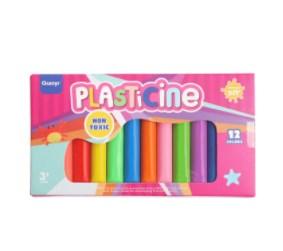Plasticine toys, with their malleable and colorful appeal, have become a staple in the creative and educational toolkit for children worldwide. These toys, often made from a blend of polymers and other materials, offer endless possibilities for imaginative play and learning. However, the environmental impact of plasticine toys is a growing concern in today's eco-conscious society. This article delves into how the production, use, and disposal of plasticine toys can be managed to protect the environment.
The first step in ensuring the environmental friendliness of plasticine toys lies in the selection of materials used in their production. Manufacturers can opt for biodegradable polymers or natural ingredients such as cornstarch, which can reduce the environmental footprint of the toys. Additionally, the use of non-toxic, water-based dyes and pigments can further minimize the ecological impact.
The production process itself can be a significant contributor to a toy's carbon footprint. By adopting energy-efficient technologies and practices, manufacturers can reduce the amount of energy consumed in the creation of plasticine toys. This includes the use of renewable energy sources, optimizing machinery for reduced power usage, and implementing waste reduction strategies.
The packaging of plasticine toys is another area where environmental considerations can be addressed. Using recyclable or biodegradable materials for packaging can significantly reduce the waste generated by these products. Moreover, minimizing the use of packaging to only what is necessary for protection and identification can also contribute to a greener approach.
Consumers play a crucial role in the environmental impact of plasticine toys. By educating users on the proper disposal methods, such as recycling or composting where applicable, the lifespan of these toys can be extended, and their environmental impact can be mitigated. Providing clear instructions on packaging and through marketing materials can help to inform consumers about these practices.
To further reduce the environmental impact of plasticine toys, encouraging their reuse and repurposing can be beneficial. This can be facilitated by designing toys that are easy to clean and maintain, as well as promoting creative ideas for repurposing old or used plasticine. Community initiatives, such as toy libraries or swap meets, can also help to extend the life of these toys.
Innovation is key to the future of environmentally friendly plasticine toys. Research and development in the field of biodegradable materials can lead to the creation of toys that not only provide the same creative benefits but also break down naturally at the end of their life cycle. This can be achieved through the use of advanced polymers that are designed to degrade under specific conditions.
Adherence to environmental regulations and industry standards is essential for the production of plasticine toys. By ensuring that all products meet or exceed these standards, manufacturers can demonstrate their commitment to environmental responsibility. This includes the use of safe materials, energy-efficient practices, and responsible waste management.
The environmental impact of plasticine toys is a multifaceted issue that requires a comprehensive approach. From the selection of sustainable materials to the promotion of responsible consumer behavior, every step in the lifecycle of these toys presents an opportunity for environmental stewardship. By embracing eco-friendly practices and innovations, the plasticine toy industry can contribute to a greener future for all.



